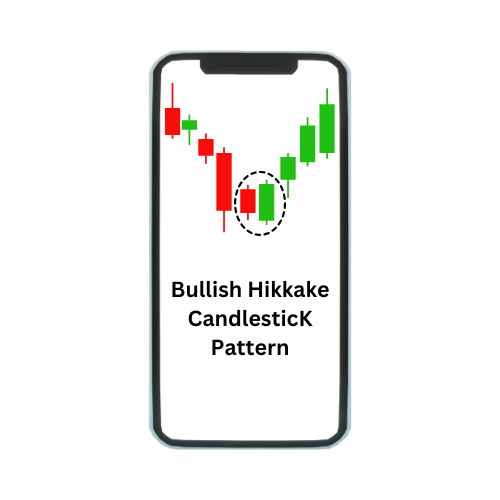Candlestick patterns provide insightful technical analysis tools for traders across diverse financial markets. In addition, these patterns help depict the emotional state of the market, offering traders potential entry and exit points. Two such patterns are the ‘On-Neck’ and ‘In-Neck’ patterns, which are typically associated with a bearish continuation.
What are On-Neck and In-Neck Candlestick Patterns?
- On-Neck Pattern: This is a two-candlestick pattern that forms during a downtrend. The first candle is a long black (or red) candle, followed by a smaller white (or green) candle that opens lower but closes at or very near the previous candle’s low.
- In-Neck Pattern: Similar to the On-Neck pattern, the In-Neck pattern also occurs in a downtrend and consists of two candles. However, in the In-Neck, the second candle closes slightly above the previous candle’s low but not above its close.
How to identify the on-neck pattern?
- The first candlestick will have a big bearish body with small shadows. It represents that price is in a downtrend. The body to wick ratio should be at least 80%.
- After a big bearish candlestick, a small bullish candlestick will form. It will open with a gap down, and then this candlestick will close at the closing price of the previous bearish candlestick.
- The small bullish candlestick should not close above the 15% of the previous bearish candlestick. This is called on neck pattern because price always retraces to the neck of bearish candlestick.
How Does an On Neck Pattern Work?
- The on neck pattern is the result of a downtrend falling within the range of an uptrend. It takes place when a long bearish candle is followed by a short bullish candle that is unable to go beyond the close of the black candle. The short bullish candle can be in many forms such as rickshaw man or doji.
- However, there must not be any real body going beyond the close of the previous candle. The chart displays bulls trying to reunite that ultimately frizzles instead of succeeding in a change in trend over a long period of time. When the bullish candle is not able to rise above the previous days lows, bears again come in the control, and lower down the prices in the market.
- As compared to the in-neck patterns, the on neck pattern is more preferred and reliable. In the in neck pattern, the second candle ends up a bit higher than the close of the first candle. However, there are some researchers that suggest that its results are just a little better than flipping a coin.
The psychology behind the on-neck pattern
- The On-neck candlestick pattern forecasts downtrend continuation after a short-term price reversal. This pattern is based on the fact of impulsive and retracement waves.
- The market structure consists of two waves. After forming the impulsive wave, a retracement wave will form and vice versa. The big bearish candlestick shows a bearish impulsive wave. During this wave, institutional traders will decrease the price value of any asset or currency.
- After an impulsive wave, a small retracement wave will form. It is a short-term reversal in trend. The market hardly reached the neck of the bearish wave. Then after this retracement, the price value will decrease again by an impulsive wave. This is the simple psychology behind this pattern.
What is the difference between an neck pattern and a thrusting?
- A thrusting pattern can be seen as both a continuation pattern which is bearish and a reverse pattern that indicates a bullish trend. This pattern is similar to an in neck or on neck candlestick patterns because it has two candles. The first candle is tall and bearish while the second is bullish and shorter.
- The closing point is what makes the difference between the in and on neck patterns and the thrusting. The second candle in the thrusting pattern closes higher than the first, but closes closer to the middle or near the center of the first candle.
- A thrusting pattern, however, doesn’t always produce a clear result. It can sometimes show a reversal or continue the downtrend.
- This pattern is not strong enough to confirm the trend so traders should be cautious. Before trading, it is a good idea to search for other indicators that indicate a bearish trend. Traders should take the time to look closely at the similarities between the two candlestick patterns and identify the on neck pattern before trading.
Best working conditions for the on-neck pattern
To increase the winning ratio of a trade setup, always add the confluences. A bearish trendline or moving average can also be used with the on-neck pattern to increase the winning ratio.
Such as
- An On-neck pattern should form during a bearish trend. It will not work in the support zone.
- It will work best when the RSI indicator oscillates between 30 to 70 values.
Conclusion
- A candlestick pattern that is on the neck suggests that there will be a continued downtrend. The pattern is represented by two candles.
- The first candle is tall and bearish, while the second candle is shorter and more bullish. The closing price for the second candlestick must be the same as that of the first, or close to it. To confirm the bearish trend, it is best that traders watch the third candlestick.
- An on neck pattern can be similar to the thrusting candlestick and in neck patterns. The in neck pattern can also be an indicator of a downtrend but it might not be as strong than the on neck.
- The thrusting pattern, which can often show mixed signals, is also a sign of a downtrend. The best indicator of a downward trend is the one on the neck candlestick. This candlestick can be used in conjunction with other technical analysis charts and patterns for reliability.




